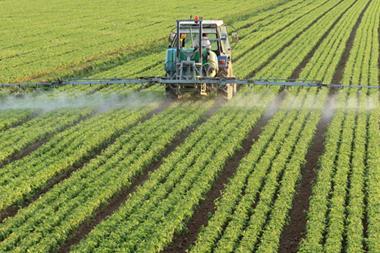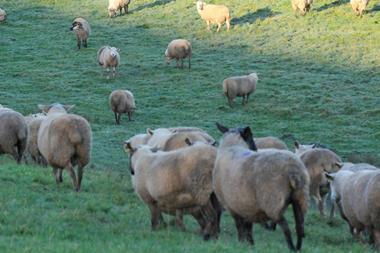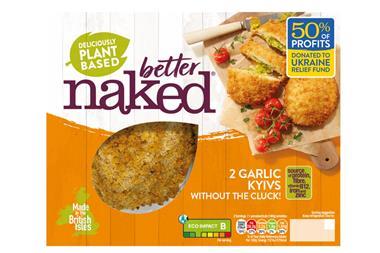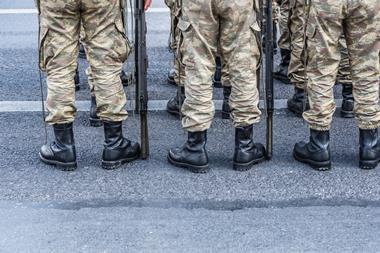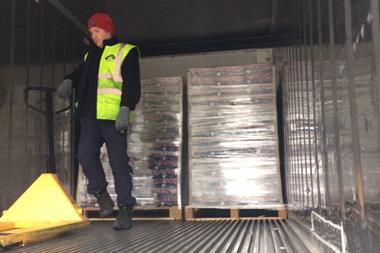Wheat, gas and fertiliser price rises loom after Russia’s invasion of its neighbour (This article was last updated on 24 February 2022)
After a year of soaring commodity prices that drove UK consumer price inflation over 5%, 2022 opened with some hope that prices of metals and energy would begin to plateau, with food following suit.
Analysts at Mintec said in January that inflation for many commodities could “top out just around spring”.
But that prospect now looks short-lived after Russia – the world’s biggest exporter of fertiliser, gas and wheat – invaded its neighbour, which is not only the world’s third-ranked wheat supplier but is also a major supplier of maize and sunflower oil.
Russian President Vladimir Putin’s speech on 21 February, in which he announced Moscow would recognise as independent the Russian-controlled parts of Donetsk and Luhansk in eastern Ukraine, was followed by a spike in oil prices, in turn threatening a similar surge in other commodities.
And by the time Russia’s military had launched a multi-pronged attack on Ukraine in the early hours of 24 February, oil prices had surged past $100 (£74) per barrel to hit their highest level for more than seven years.
”With Russia as an energy superpower, the energy market was always going to be the first to react to increased tensions with the West”, the Centre for Economics and Business Research said earlier.
Putin’s Monday order that Russian soldiers cross the border into the regions as “peacekeepers” had in turn prompted UK sanctions on five Russian banks and threats to move this year’s Champions League football final away from St. Petersburg.
But after those tensions degenerated into what could end up the worst military conflict in Europe since the 1990’s Balkans Wars, the impact of Russia’s attack, the expected flurry of further Western sanctions and the potential displacement of millions of people looks likely to have far-reaching consequences on the world’s core food commodities.
So how could a conflict between the two countries infuence food prices?
In early February, when concerns began mounting that war could erupt on Europe’s eastern flank, grain markets were already reacting, according to Alex Waugh, director of UK Flour Millers. Both countries are “substantial suppliers” of grains like wheat and maize, he notes.
Dutch bank ING also noted that commodity markets were already “starting to price in some geopolitical risk around the growing tension between Russia and Ukraine” earlier this month, even when there remained “plenty of uncertainty” over how the situation would evolve.
Wheat is the big worry, says Carlos Mera, head of agri-commodity markets at Rabobank, who describes it as “the most important [food] commodity”.
The two former Soviet republics together provide some 23% of global wheat exports, according to US Department of Agriculture (USDA) estimates, though others put the combined percentage closer to 30.
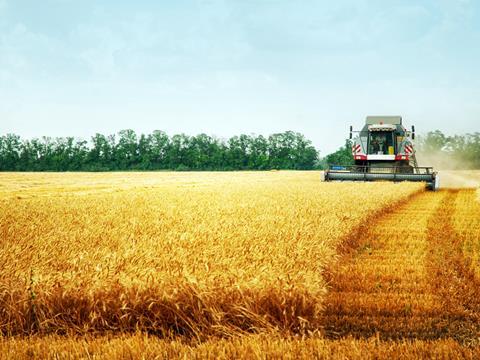
Either way, their weight was enough to push US and European futures up by 7% and 6% during the three weeks to 31 January as tensions continued to rise – despite Ukrainian President Volodymyr Zelensky rebuking Western leaders for stoking “panic” over the stand-off.
Despite the ongoing uncertainty around how the situation would unfold, traders were trying to be prepared and ”looking for alternative sources where they could buy wheat and maize in case there could be an escalation”, says Zanna Aleksahhina, market analyst with Mintec.
Markets making moves
Middle East and North African countries – where food price rises have led to social unrest in recent decades – depend on wheat shipped across the Black Sea. Some Arab-nation importers “are looking to source from Australia”, according to Aleksahhina, who says Argentina, another top-10 wheat exporter, could also increase supply to the region.
Currently, both exporting countries have plentiful supplies. The UN Food and Agriculture Organization’s latest Food Price Index showed monthly wheat prices were down by 3.1% in January due to “increased seasonal supplies from large harvests in Australia and Argentina”.
But the January drop comes after a roughly 30% global wheat price rise last year, with the FAO saying “uncertainty over exportable supplies” would likely affect prices this year, which could point to further price inflation for the commodity.
While the UK grows around 80% of the wheat it needs and imports most of the rest from the EU, according to the government’s Food Security Report, it has not been shielded from global price fluctuations.
“It’s about £290 a tonne for bread wheat now, a year ago it would have been £240-ish, two years ago it was more like £180 or £185,” says UK Flour Millers’ Waugh.
“Even though our wheat doesn’t come from Ukraine, prices will be affected”
British supply chains had earlier largely sought to absorb rising costs, with Office for National Statistics’ data showing the national average white loaf price in November 2021 to be the same as the 107p recorded in August 2020.
However, November and December saw the the official CPI top 5% year-on-year, while unofficial data for January published by the British Retail Consortium showed food inflation hitting 2.7%, the highest month-on-month increase in a decade.
The Food Foundation in January said consumer prices for “starchy staples” were 3.5% higher on average in December compared to January 2021, with pasta up by over 26%, more or less tracking the global wheat price rise.
And wheat prices could climb again by anything from 10% to 30%, suggests Rabobank’s Mera, if Ukraine’s Black Sea ports are blockaded or Russian incursions lead to reduced Ukrainian output.
“Even though our wheat doesn’t come from Ukraine, prices will be affected”, Waugh agrees.
Strategic thinking
A Russian invasion could “have an impact on the production and export of Ukrainian agricultural commodities, including corn and wheat”, according to ING.
Such an outcome could in theory give Russia, the world’s biggest wheat exporter, something like a whip hand over supply and prices. “In that case wheat could be used as a strategically important commodity,” Mera says.
In its latest World Agricultural Supply and Demand Estimates, the USDA says Russia has “announced a wheat export quota of 8.0 million tonnes from mid-February until the end of June, which is expected to constrain their exports in the latter half of the marketing year”.
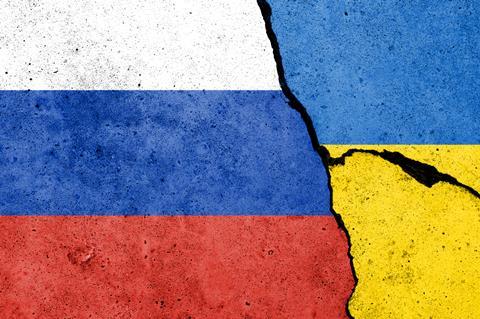
Russia would suffer if it did reduce exports, though. By the end of January, even as wheat futures soared and US and Russian diplomats fired verbal broadsides at each other at the UN, Russian domestic wheat prices were down for the third week running due to a fall in the value of the ruble in the wake of the military build-up at the Ukrainian border.
“Another scenario is that there is no actual disruption of exports, but there could be cheaper prices in fact, as tensions endure and currencies depreciate – incentivising more selling,” Mera says.
Sanction impact
Wheat supplies would be reduced if Western governments apply wide-ranging, exports-curbing sanctions on Russia’s economy. And with Russia having now invaded Ukraine, they are increasingly likely.
Speaking before the invasion, Mera believed sanctions would still “allow for wheat exports”, with Western economies reeling from supply-chain woes, supermarket shortages and related inflation – not least in the US where the president has of late been derided as “bare shelves Biden”.
Other Western powers have significant economic ties with Russia, with Germany dependent on Russia for energy and London long a hub for mansion-hungry post-Soviet oligarchs.
However, Germany’s cancelling of the Nordstream 2 pipeline project on 22 February suggests we could see further punitive action now Russia’s forces have stepped up their aggression.
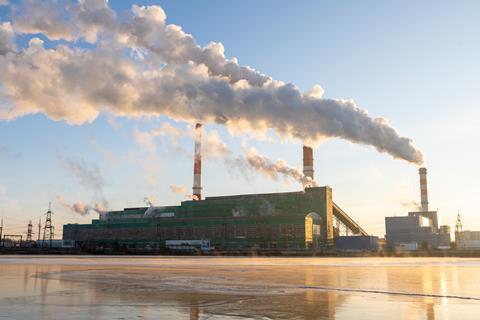
Russia also holds some cards, though. Currently, it supplies around a third of Europe’s gas and is the world’s second-biggest oil producer. It is also a leading source for metals and minerals such as aluminium and copper.
But demand for Russian energy during the winter heating season in Europe would make it “very difficult” for some nations “to buy into” sanctions, according to to Mera.
And even if sanctions were imposed, Russia would likely have a sympathetic buyer, particularly for its oil, in the world’s second-biggest economy China. President Vladimir Putin hailed the two countries’ “unprecedented” ties during a meeting in Beijing with Chinese Xi Jinping earlier in February.
Sweeping sanctions targeting Russia’s vast natural resources would be “an extreme scenario” and “not one we think is most likely”, according to Mera.
However, if the West “reacts strongly with sanctions that target key Russian industries”, according to ING, the impact could be “far-reaching” and “lead to a significant tightening in energy, metal, and agri markets”.
Gas could be key
We’ve already seen a significant impact on oil prices. At the start of February, the Russia-Ukraine stand-off had “exacerbated volatility in global energy markets, sending oil prices toward $90/barrel,” according to energy analysts S&P Global Platts.
And today, oil prices have surged past $100 (£74) per barrel to hit their highest level for more than seven years.
The world’s nations are taking action to mitigate a surge in oil prices. Earlier this month, Opec met to discuss potentially increasing output, which in theory could lead to oil prices falling and gas following suit.
“Gas price changes have an impact on the whole chain”
The US is the biggest supplier of liquefied natural gas to the EU, according to the European Commission, which has accused Russia of “weaponisation” of energy and says it is working with the US government to find other suppliers.
Early in February, Biden met Sheikh Tamim bin Hamad al-Thani, emir of Qatar, the world’s biggest exporter of LNG, as part of contingency planning should Russian taps be tightened either by sanctions or the arguably likelier scenario of Moscow cutting supply.
Fertiliser concerns
Whatever happens next, seemingly ineluctable energy market turmoil will quickly affect food markets, with fertiliser cost and production “very much linked to natural gas price”, according to Mera.
Gas price changes have “an impact on the whole chain”, Waugh says.
Farmers all over the world have struggled with rising fertiliser prices and reduced supply over the past year, not least as China and Russia imposed restrictions on exports.
Russia’s fertiliser exports are unlikely to come under any sanctions, according to IHS Markit, as such a measure could lead to ”more problems for the group imposing the sanctions than the recipient”.
But tensions and now conflict in Ukraine could lead to further tightening of grain and energy supplies, spilling over into an already-shaky fertiliser market and adding to food price rises.
“It’s not only the grains, it’s the natural gas, Brent crude, fertiliser,” Aleksahhina adds. “You need natural gas to make fertiliser, you need fertiliser to grow grains, so that’s going to make your production costs for grain high, it’s a vicious cycle.”
There is still much uncertainty over how things will unfold. But with the Russians finally playing their invasion cards, the food and drink sector should prepare itself for further volatility in the coming months.








